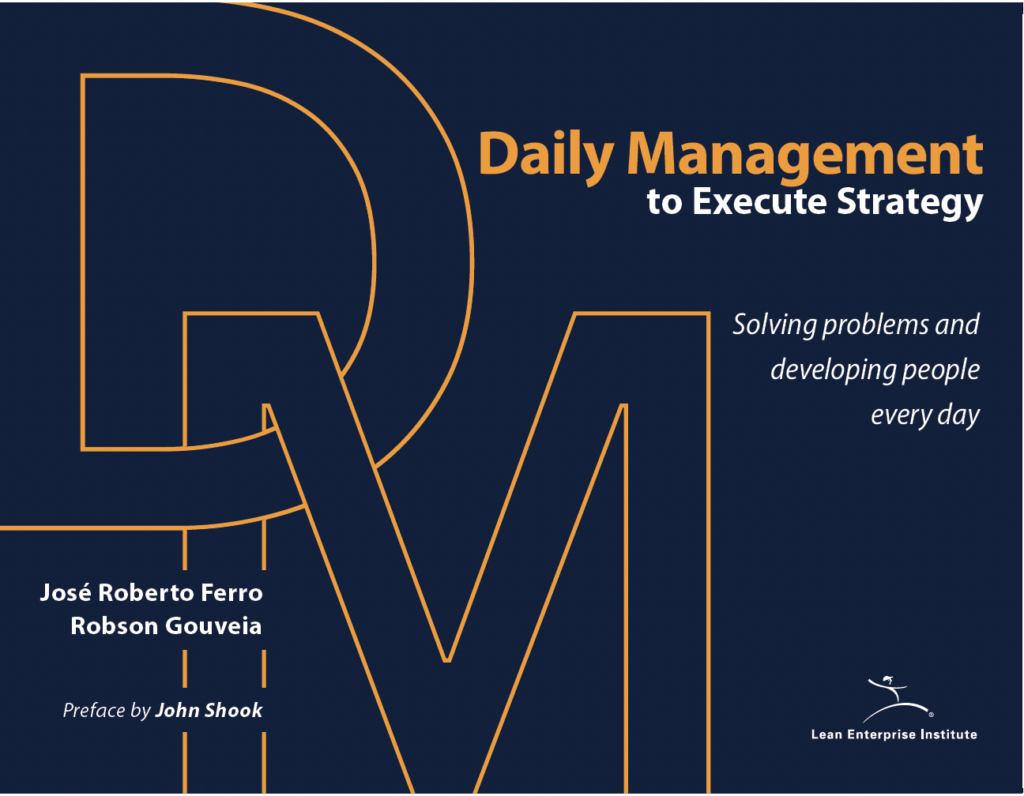We receive signals that something is not right more often than we would like. Despite real evidence coming to light, we are reluctant to acknowledge that we have a problem and that we need to do something.
The answer just never comes. Or it takes too long and when it does come, it is no longer the most suitable. And when we finally realize it, the damage is already done and sometimes it’s irreversible. These deviations impair the ability to execute strategy and deliver what a company proposes to its customers.
Chances are you’ve already experienced this in your company. And you can ask yourself: what do we need to do differently to avoid these situations? How do we respond to deviations in a more agile and effective way? And how do we ensure that these solutions are aligned with the company’s strategic objectives and main priorities?
One of the fundamental elements that makes a company competitive is its ability to deal with problems on a day-to-day basis, in line with its strategy. In our experience supporting dozens of companies through lean management principles and practices, we’ve noticed that some of them are more capable of handling these situations.
One of the factors that makes the difference is the use of an extraordinarily powerful process of daily management that structures and speeds up problem-solving by ensuring that all employees, every day and in small groups, engage in identifying, exposing, and resolving deviations and abnormalities that occur in all processes and activities per strategic goals.
Daily management accelerates the increasingly frequent adjustments required to tune a company’s strategy more often than the traditional semiannual or annual reviews.
Daily management allows for a profound cultural change by transforming management methods by engaging everyone – including the front line – and aligning them with the strategic priorities of the company.


We realized there was great interest in the subject from the positive reaction to our mid-2015 piece “How to Create an Effective Daily Management System,” published in Planet Lean, the online magazine of the Lean Global Network (LGN). For two consecutive years, it was the most accessed article on the websites of the magazine and Lean Institute Brazil (in Portuguese). Thus, we decided to write this book to delve deeper into the subject and help lean companies and practitioners build a robust daily management system.
Imagine…
A quick reaction and decision-making process that ensures performance in all areas of the company. Daily management allows everyone involved in a process to see if things are going according to established expectations and, if deviations occur, to react quickly.
Company strategy is alive, visited, and adjusted daily. Daily management is the main method for connecting strategy with real processes, making business goals and objectives public, specific, and operational for all levels of the organization through daily monitoring.
All areas and processes of the company have a purpose aligned with the strategy. Daily management sets clear goals, monitors them daily, and connects indicators to daily actions for reaching the goals.
All employees see how their work connects to strategy and understand how they add value to customers. Daily management connects individual work to the particular purpose of an area, which is, in turn, connected to delivering value to customers.
All employees engage in problem-solving in a workplace that is a psychologically safe environment for daily learning, experimentation, and improvement. Daily management is a powerful method for developing people’s skills, making the workplace a practical laboratory where everyone learns and improves every day guided by lean leadership principles.
Daily management is a visual and transparent method that lets everyone directly involved in the daily results of an area or process compare results to goals. Through quick daily meetings, workgroups discuss problems and make the right decisions in the shortest possible time. If this doesn’t happen, a structured leadership support system is activated.
Daily problem-solving, at both the operational and managerial levels, has a powerful effect in helping to ensure expected results are achieved by identifying deviations when they are still small. And it provides the agility needed for strategic reorientations, as the front lines are much more sensitive to fluctuations in demand.
This book introduces daily management concepts and practices so you can implement them in your organization. It provides essential guidelines for you to design, execute, and maintain your daily management system. It consists of five parts:
- What daily management is. You’ll reflect on daily management’s fundamental concepts at the operational and managerial levels, its main benefits, and its three essential blocks – commitment, control variables, and problem-solving.
- Designing daily management. You’ll learn the steps to connect commitments with strategy, how to establish variables to monitor daily, and how to apply problem-solving processes and methods.
- Running daily management. You’ll learn execution practices for teams and leaders along with the attitudes they need for daily monitoring and problem-solving meetings, which are fundamental elements of a daily management system.
- Daily management cases. Through case studies and practical examples inspired by real companies, you’ll learn how to apply daily management in a variety of environments, including: turning around an industrial company; improving care in an oncology clinic; easing the lives of students at a university; reducing errors in the development of software by a bank and IT vendor; boosting agricultural harvest performance; and generating new knowledge in a product development project.
- Maintaining and improving daily management. You’ll understand not only how to maintain daily management practices but how to continuously improve them, an ever-changing process that evolves with the knowledge and maturity of teams and leaders. You’ll also explore how to adjust commitments and goals during strategic reorientations.
Applying the practices suggested here will enable you to avoid avalanches of unresolved outstanding issues and slow response times to deviations. You’ll develop extraordinary agility in solving problems and eliminating obstacles that prevent the achievement of desired results, reducing process instability. Daily management practices will change people’s attitudes by dramatically reducing the heroic actions of putting out fires, which drain energy from leaders, distracting them from focusing on improvements. They will increase the sense of urgency in everything you do. They will eliminate frustrations with formulated strategies that are never implemented because they are not deployed properly. And they will enable everyday group learning by everyone in a psychologically safe environment.
If you haven’t started your daily management journey yet, this book might be a good start. If you already have a daily management process in your company or your area, this book will help you improve it, making daily management even more useful and relevant.
Aimed at leaders of any type of business or department, this book will help you improve your management capability, involve and engage the entire team, and bring a spirit of belonging and ownership to each individual’s work. You’ll focus everyone on solving problems, making improvements, concentrating on business needs, and executing the strategy. Every day.
The lessons in this book will better prepare your company to face the competition. Plus, your management system will be much more agile when confronting pressure from demanding customers, new companies, new technologies, and new business models in an environment that requires frequent adaptations and transformations.






